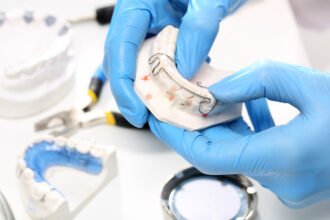According to the results of the AAMC’s Center for Workforce Studies 2012 Medical School Enrollment Survey, the nation is on track for a 30 percent increase in medical school enrollment by 2017.
According to the results of the AAMC’s Center for Workforce Studies 2012 Medical School Enrollment Survey, the nation is on track for a 30 percent increase in medical school enrollment by 2017. This increase is due in part to the 16 new medical schools granted full, provisional, or preliminary accreditation by the Liaison Committee on Medical Education (LCME) since 2002.
Several of the new medical schools have programs specifically focused around training primary care physicians. Many are in states or regions with particularly strong needs for an increased health care workforce, and the schools have made efforts to entice the students to stay in the area after graduation. In addition, many established schools have created programs designed to attract students interested in a career in primary care or in practicing in underserved rural or urban areas. Below are a few examples of new schools that have taken measures to address the nation’s critical need for primary care physicians.
Quinnipiac University’s Frank H. Netter MD School of Medicine, with its inaugural class this year, will have a curriculum designed to train primary care physicians. Officials hope that the medical school will become a national model of interprofessional health care education. Students will learn to become a member of a primary health care team by regularly interacting with students from the School of Health Sciences and School of Nursing. The goal is for 50 percent of the medical school’s graduates to go into primary care. Comparatively, about one-third of graduating doctors enter into primary care nationwide.
Central Michigan University College of Medicine, also scheduled to open in 2013, will have a curriculum designed specifically to train primary care physicians to practice in Michigan’s medically underserved communities. The College of Medicine’s admissions page says additional consideration will be given to students who plan to practice in the state’s underserved areas.
Florida International University Herbert Wertheim College of Medicine, which will graduate its inaugural class of 33 students this spring, developed an innovative program called Green Family Foundation NeighborhoodHELP (Health Education Learning Program). Medical students team up with students in social work, nursing, and public health programs to go into communities of need to track and monitor the health of families throughout those students’ education. Dr. Pedro Greer, director of the program, describes the experience as “total immersion in real families with real problems.” School officials hope the program will bring tangible results to the communities including reduced emergency room visits, improved health literacy, and increased preventive care while at the same time revolutionize the way medical students are taught.
It is not only the new schools that have implemented programs to address the impending primary care physician shortage. For example, Northeast Ohio Medical University (NEOMED) and Cleveland State University (CSU) launched the Urban Primary Care Initiative in April 2012. In a partnership designed to encourage minority students to become primary care doctors, select students will be granted full tuition in exchange for a promise to practice in underserved Cleveland neighborhoods for five years after receiving their medical degrees. The Initiative helped to establish a neighborhood clinic model, which will pair students with a single clinical site throughout all four years of medical school. CSU and NEOMED officials hope that allowing students to get to know the people of a single Cleveland neighborhood will increase the chances of them returning to practice in the area.
Officials from the Warren Alpert Medical School of Brown University announced this year that they are developing a dual degree MD/Sc.M program in Primary Care and Population Health. The plan is to create a four-year program for 24 students a year beginning in fall 2015. The school will emphasize teaching not only medical knowledge, but public health policy, leadership skills, and working as a member of a health care team. School officials hope that this new program will become an educational model for other medical schools.
According to the latest data, 76 percent of schools said they had an established program or recently implemented at least one initiative to increase student interest in primary care. In this time of great change within the health care system, continuing to track the implementation and effect of these programs to address the primary care physician shortage is critical.
If you like this post, please read other posts in the series on the Person-Centered HealthCare main page. And if you have a story to tell that may be a fit with our series, please comment below or email me at joan@socialmediatoday.com






